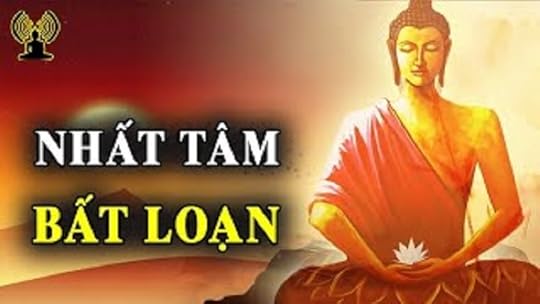Nhất tâm bất loạn – One-pointedness of mind

Chào anh chị em,
Trong Tịnh độ tông, “Nhất tâm bất loạn” là tập trung vào niệm “Nam-mô A-di-đà Phật” không ngừng nghỉ, để tâm trí luôn an trú Phật A-di-đà và Phật tính của chính mình.
Nhưng ngày nay “nhất tâm bất loạn” được dùng thường xuyên trong mọi bối cảnh và pháp môn khác để tập trung tâm trí vào một điểm, như Thiền hít thở tập trung vào hơi thở, Thiền đi tập trung vào bước chân đi, Thiền ăn tập trung vào ăn, Thiền từng phút tập trung vào chỉ một việc gì đó mình đang làm…
Tập trung vào một việc đang làm để tâm trí chỉ còn “nhất tâm” (một tâm) và không còn chạy lăng nhăng như khỉ chuyền cành, không còn chạy theo tham sân si, không còn loạn động với đủ mọi thứ thất tình lục dục. (Thất tình: hỉ, nộ, ái, ố, ai, lạc, dục – mừng, giận, yêu, ghét, buồn, vui, ham muốn; lục dục: sắc dục, thanh dục, hương dục, vị dục, xúc dục, pháp dục [ý dục]).
Tuy nhiên, “nhất tâm” cũng chỉ là trạm ngừng để đi đến vô tâm (còn gọi là, vô niệm). Vô tâm/vô niệm là tâm Không – tâm rỗng lặng, rỗng và lặng, không bám vào điều gì.
Tâm rỗng lặng đối diện với hoàn cảnh nào cũng thấy được toàn cảnh, nhưng không tập trung vào đâu, không bám vào điều gì, không bám vào ý niệm nào. Tâm hoàn toàn tự do vì không bám vào niệm nào. Khi tâm thấy việc gì cần làm thì tâm sẽ làm.
Đối cảnh vô tâm (Trần Nhân Tông). Đó goi là vô tâm hay vô niệm. (Xem Vô tâm – No-mind).
Vô tâm/vô niệm là giác ngộ, tỉnh thức, Bồ-tát.
Với yêu thương,
Hoành
o0o
Nhất tâm bất loạn – One-pointedness of mindDear Brothers and Sisters,
In Pure Land Buddhism, “One-pointedness of mind” is to focus on reciting “Namo Amitabha Buddha” without stopping, so that the mind always dwells on Amitabha Buddha and one’s own Buddha nature.
But today, “one-pointedness of mind” is used frequently in all contexts and other methods to focus the mind on one point, such as breathing meditation focusing on breathing, walking meditation focusing on walking steps, eating meditation focusing on eating, every-minute meditation focusing on just one thing you are doing…
The mind focuses on one thing you are doing so that the mind is “one-minded” and no longer wanders around like a monkey swinging from branch to branch, no longer chases after greed, anger, ignorance, no longer be agitated by seven emotions and six desires. (Seven emotions: joy, anger, love, hate, sadness, happiness, desire; six desires: form, sound, smell, taste, touch, dharma [mental desire]).
However, “one-pointedness of mind” as such is just a stopping point to reach no-mind (also called, no-thought).
No-mind/no-thought is an empty and quiet mind, not clinging to anything.
An empty and quiet mind sees the whole picture in any situation, but it does not focus on anything, does not cling to anything, does not cling to any idea.
The mind is completely free because it does not cling to any thought. When the mind sees something that needs to be done, it will do it.
Facing a situation with no-mind (Tran Nhan Tong). That is called no mind or no thought. (See Vô tâm – No-mind).
No mind/no thought is Enlightenment, Awakening, Bodhisattva.
With compassion,
Hoành
o0o
© copyright 2025
Trần Đình Hoành
Permitted for non-commercial use
http://www.dotchuoinon.com
Trần Đình Hoành's Blog
- Trần Đình Hoành's profile
- 5 followers



